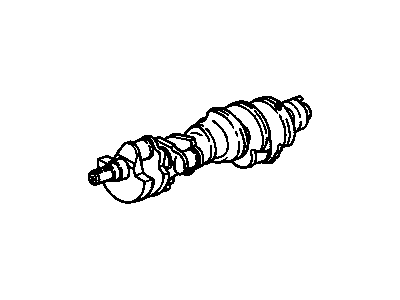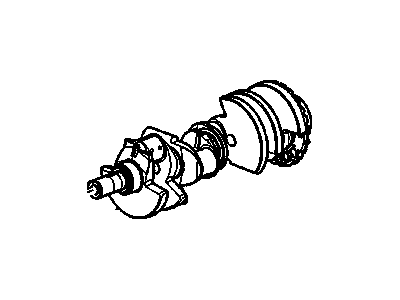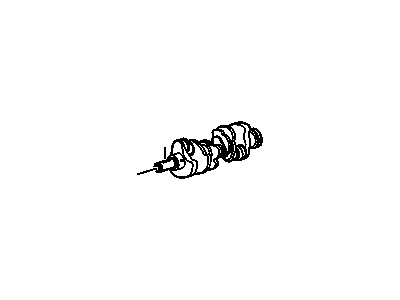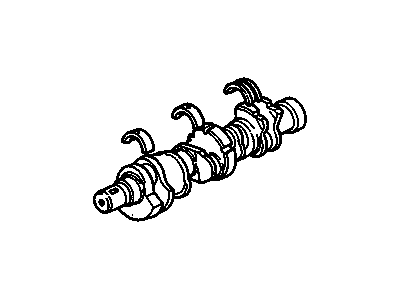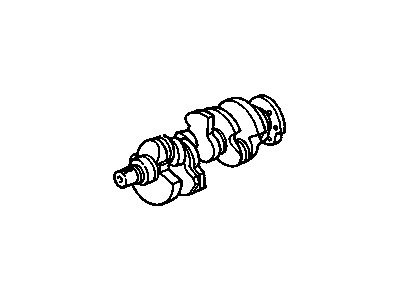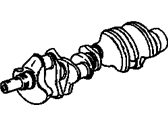
My Garage
My Account
Cart
Genuine Pontiac Grand Prix Crankshaft
Crank Shaft- Select Vehicle by Model
- Select Vehicle by VIN
Select Vehicle by Model
orMake
Model
Year
Select Vehicle by VIN
For the most accurate results, select vehicle by your VIN (Vehicle Identification Number).
11 Crankshafts found
Pontiac Grand Prix Engine Crankshaft
Part Number: 10243070$773.23 MSRP: $1233.22You Save: $459.99 (38%)Ships in 1-3 Business Days
Pontiac Grand Prix Crankshaft
Each OEM Pontiac Grand Prix Crankshaft we offer is competitively priced and comes with the assurance of the manufacturer's warranty for the part. Furthermore, we guarantee the speedy delivery of your orders right to your doorstep. Our hassle-free return policy is also in place for your peace of mind.
Pontiac Grand Prix Crankshaft Parts Questions & Experts Answers
- Q: How should the crankshaft be cleaned and inspected for damage on Pontiac Grand Prix?A:Clean the crankshaft with solvent and dry it with compressed air if available. Check the main and connecting Rod Bearing journals for uneven wear, scoring, pits, and cracks. Rub a penny across each journal several times; if copper rubs off and is embedded in the crankshaft, the journals should be reground. Remove all burrs from the crankshaft oil holes with a stone, file, or scraper to ensure the oil holes are chamfered, preventing sharp edges from gouging or scratching the new bearings. Inspect the rest of the crankshaft for cracks and other damage, and have it magnafluxed to reveal hidden cracks at an automotive machine shop. Measure the diameter of the main and connecting rod journals with a micrometer, comparing the results to the specifications, and check for taper and out-of-round conditions by measuring at several points around each journal's circumference. If the crankshaft journals are damaged, tapered, out-of-round, or worn beyond the specified limits, have the crankshaft reground by an automotive machine shop, ensuring the correct size bearing inserts are used if reconditioned. Examine the oil seal journals at each end of the crankshaft for wear and damage; if grooves, nicks, or scratches are present, the new seal may leak upon reassembly. In some cases, an automotive machine shop may repair the journal by pressing on a thin sleeve, but if repair isn't feasible, a new or different crankshaft should be installed. For a Quad-4 engine, check the oil pump drive gear for wear and damage, and if replacement is necessary, take it to a dealer service department or an automotive machine shop, as the old gear must be drilled and chiseled off while the new gear should be heated in an oven prior to installation. Examine the main and rod bearing inserts.
Related Pontiac Grand Prix Parts
Browse by Year
2008 Crankshaft 2007 Crankshaft 2006 Crankshaft 2005 Crankshaft 2004 Crankshaft 2003 Crankshaft 2002 Crankshaft 2001 Crankshaft 2000 Crankshaft 1999 Crankshaft 1998 Crankshaft 1997 Crankshaft 1996 Crankshaft 1995 Crankshaft 1994 Crankshaft 1993 Crankshaft 1992 Crankshaft 1991 Crankshaft 1990 Crankshaft 1989 Crankshaft 1988 Crankshaft 1987 Crankshaft 1986 Crankshaft 1985 Crankshaft 1984 Crankshaft 1983 Crankshaft 1982 Crankshaft
